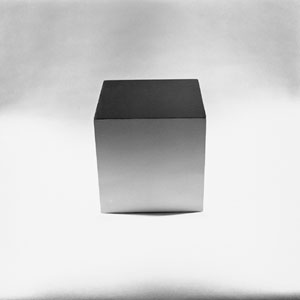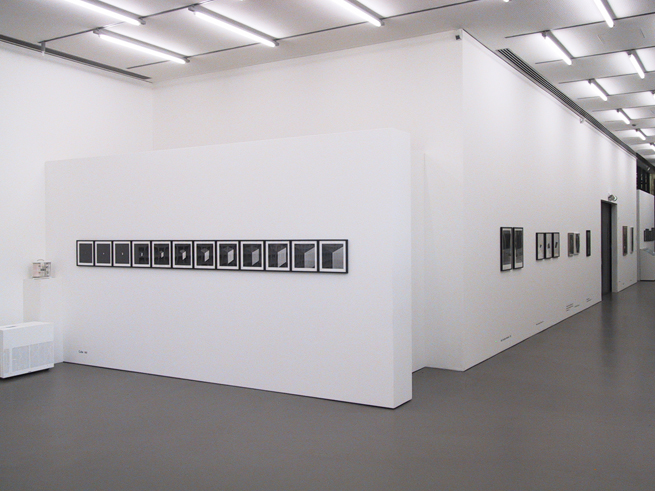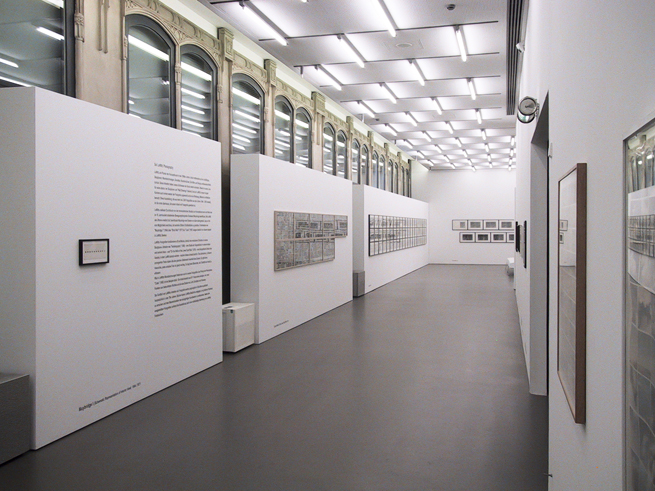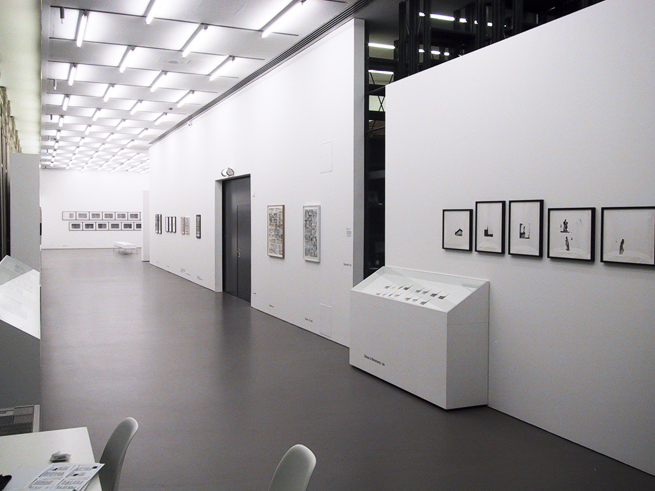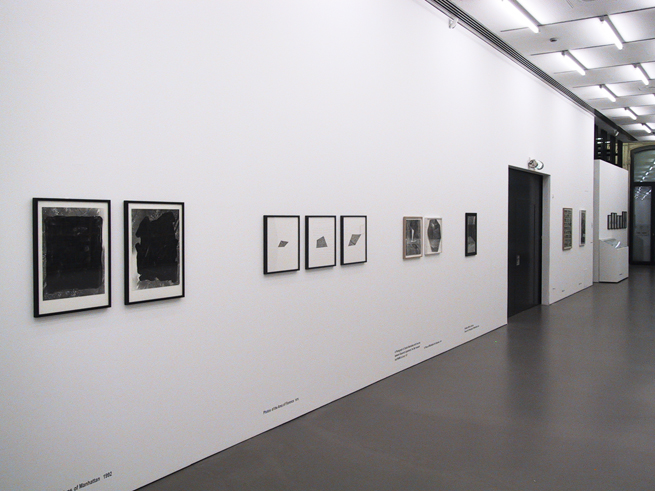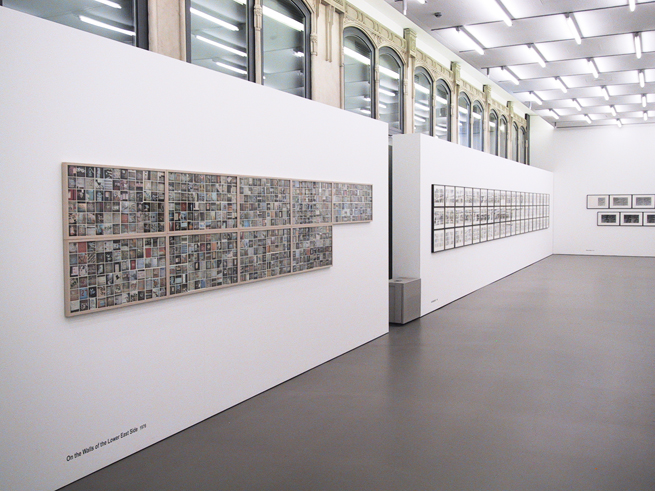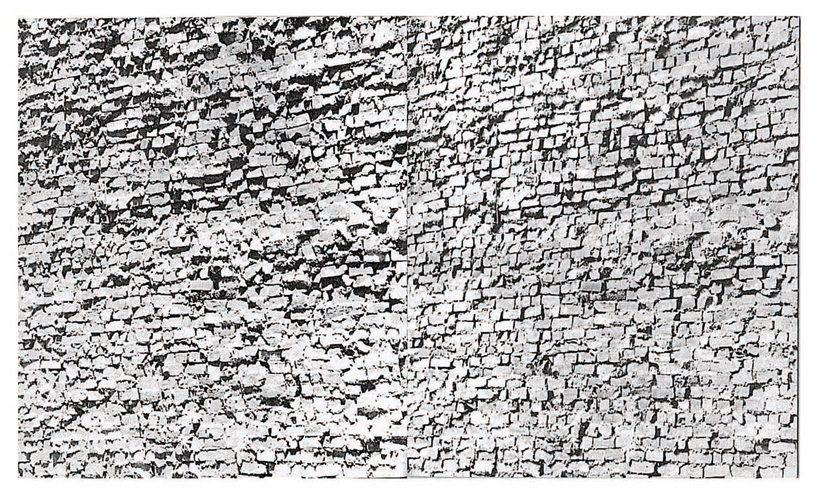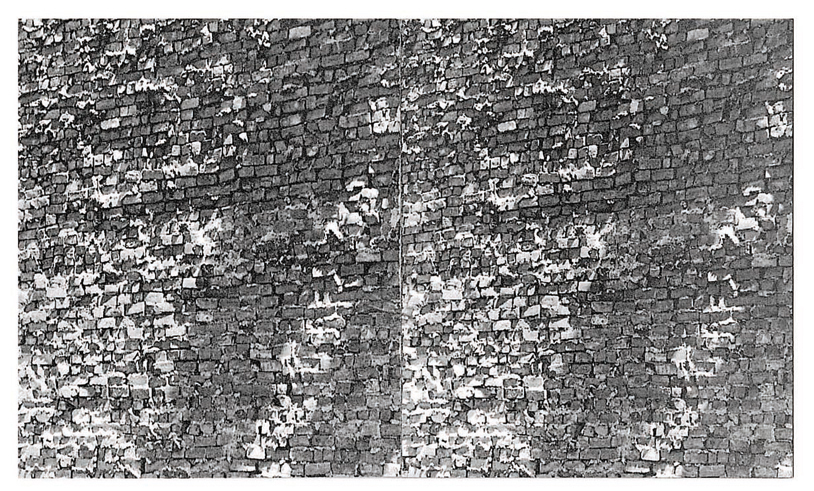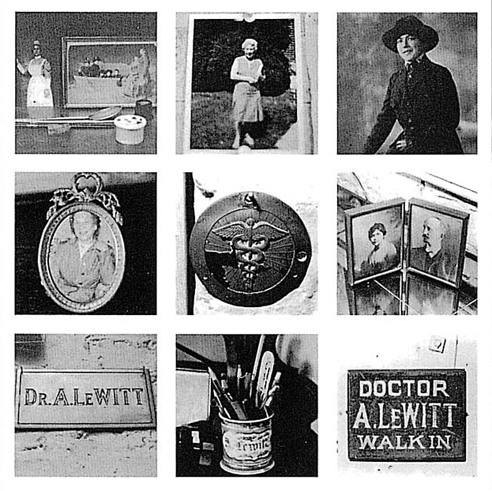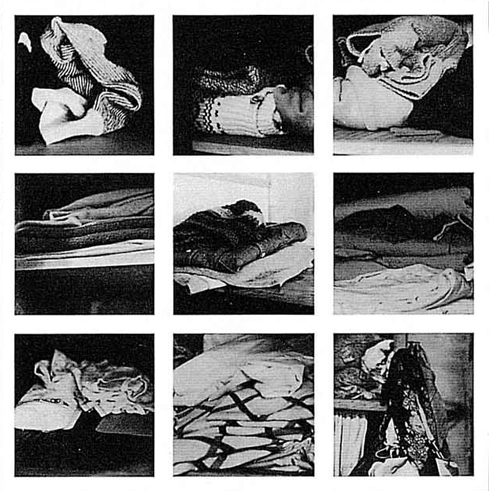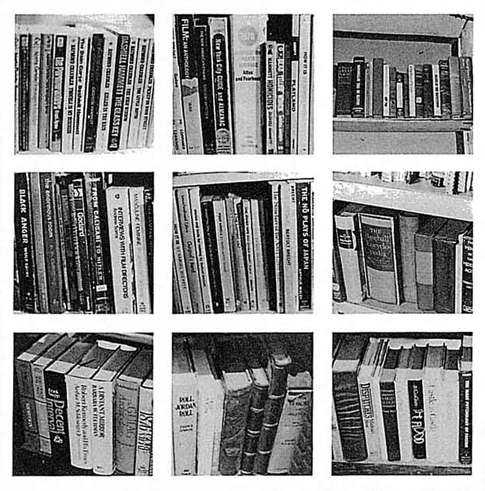Sol LeWitt
Photography
Infos
Opening
2.4.2004, 6pm
Duration
3.4.2004 – 30.5.2004
Sol LeWitt: Photography
was curated by George Stolz for La Fabrica / PhotoEspaña and had its first showing at the ICO Museum in Madrid in 2003; the exhibtion in Graz is the first presentation in the German-speaking area.
The exhibtion is accompanied by a book publication (English / Spanish / German) with numerous plates, an essay by the curator, quotes from LeWitt’s writings, as well as extensive bibliographical data.
Intro
Sol LeWitt is acclaimed as one of the most influential artists in today’s art world as a pioneer in Conceptual Art in the 1960s, a top-ranking Minimalist sculptor, a major theorist and a world-renowned muralist. Above all, his work has changed the way we see and understand art. His great fame is well deserved and yet, perhaps paradoxically, the common thread unifying his long career is precisely his insistence on reducing the role that the artist’s ego plays in creating works of art.
Throughout his career Sol LeWitt has developed key ideas in another format that has often been overshadowed by his better-known achievements: photography.
“Sol LeWitt: Photography” presents, for the first time ever, an important overview of LeWitt’s photographic works produced over some 40 years, including “Cube”, 1996; “Autobiography”, 1980; “Brick Wall”, 1977; “On the Walls of Lower East Side”, 1976; and “Muybridge I”, 1964, but also a video screening of LeWitt’s photographic stage-set for Lucinda Child’s “Dance” (1979), and a complete display of all LeWitt’s many photography books.
Read more →Sol LeWitt: Photography
Sol LeWitt is acclaimed as one of the most influential artists in today’s art world as a pioneer in Conceptual Art in the 1960s, a top-ranking Minimalist sculptor, a major theorist and a world-renowned muralist. Above all, his work has changed the way we see and understand art. His great fame is well deserved and yet, perhaps paradoxically, the common thread unifying his long career is precisely his insistence on reducing the role that the artist’s ego plays in creating works of art.
Throughout his career Sol LeWitt has developed key ideas in another format that has often been overshadowed by his better-known achievements: photography.
“Sol LeWitt: Photography” presents, for the first time ever, an important overview of LeWitt’s photographic works produced over some 40 years, including “Cube”, 1996; “Autobiography”, 1980; “Brick Wall”, 1977; “On the Walls of Lower East Side”, 1976; and “Muybridge I”, 1964, but also a video screening of LeWitt’s photographic stage-set for Lucinda Child’s “Dance” (1979), and a complete display of all LeWitt’s many photography books.Perhaps LeWitt’s single most important photographic work is his 1980 “Autobiography”. Taking as a starting point the belief that an individual is more clearly reflected in the objects that surround him/her than by his/her face and body, LeWitt decided to portray himself via photographs of everything in his home and studio. Consisting of more than 1,000 blackand-white images, “Autobiography” develops an incessant and fascinating visual rhythm while at the same time evoking philosophical themes of how we define ourselves; above all, it composes an extraordinary self-portrait.
Long before “Autobiography”, LeWitt used photography to investigate many of the same ideas that have characterized the rest of his oeuvre. In pieces such as “Muybridge I” (1964) LeWitt incorporated movement into a stationary minimalist object, while also dividing and distributing the viewer’s vision into sequences. In “Buried Cube Containing an Object of Importance but Little Value” (1968)he photographically documented his own performance, wryly connecting a representation of a temporal event with the disappearance of the commercial art object. The technique of working with sequences, which LeWitt has always used in his paintings and sculptures, is the basis for “Brick Wall” (1977), in which LeWitt photographed a brick wall from a fixed point over the course of an entire day. And in “Cube” (1990), LeWitt used 511 photographs and nine points of light to study the changes in light and shadow on a single, unmoving white cube.
Presented parallel to the site-specific work “Wall” which Sol LeWitt created specifically for Kunsthaus Graz, Sol LeWitt: Photography at Camera Austria will also inlcude work such as “On the Walls of the Lower East Side”, consisting of 666 color photographs of LeWitt’s neighborhood in downtown New York, a video screening of LeWitt’s photographic stage-set for Lucinda Child’s “Dance” (1979), and a complete display of all LeWitt’s many photography books.

